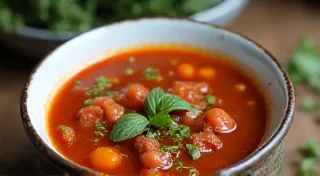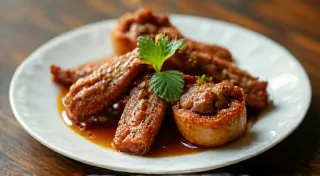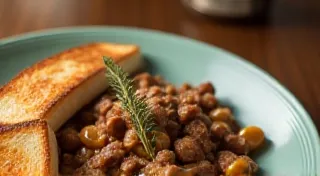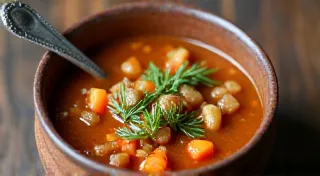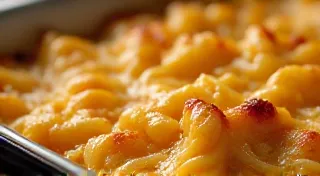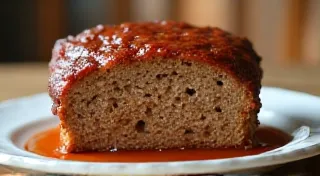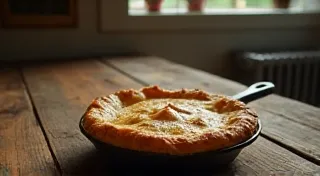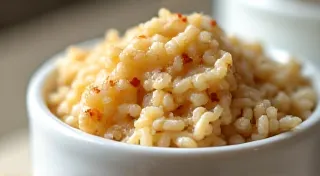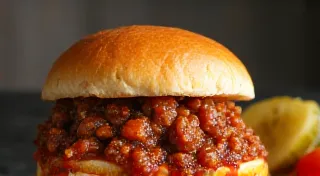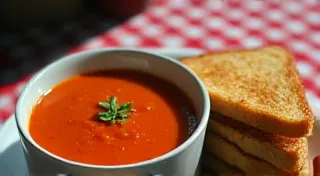Forgotten Recipes of the Great Depression: A Journey Through Frugality and Flavor
The Great Depression. The very name evokes images of breadlines, dust storms, and widespread hardship. But beyond the stark realities of that era lies a fascinating story – the story of how families persevered, nourished themselves, and found moments of joy through ingenious cooking. This website is dedicated to preserving and sharing those Great Depression recipes – authentic, resourceful, and surprisingly delicious.
These weren't dishes crafted for culinary extravagance. These were recipes born of necessity, where every scrap was cherished, and creativity flourished under the shadow of scarcity. Imagine a time when meat was a luxury, and pantry staples were precious commodities. It was a time that demanded both practicality and imagination in the kitchen. We're showcasing a unique collection of vintage food – a tangible link to a bygone era.
The Spirit of Resourcefulness: Cooking Through Hard Times
The focus wasn’t on elaborate techniques or exotic ingredients. It was about stretching every dollar, minimizing waste, and finding ways to create satisfying meals with limited resources. Think about frugal cooking at its absolute finest – a testament to the resilience and ingenuity of the American spirit. The techniques employed and the dishes created tell a powerful narrative of community and perseverance. Examining vintage food offers insights into the resourcefulness born of necessity.
A Taste of the Era: Featured Recipes
Let's explore some of the remarkable dishes that defined the tables of the Great Depression. One cornerstone of the era was the humble Bean Soup – a hearty and affordable dinner staple that could feed a family for days. Beyond its practicality, it fostered a sense of warmth and communal sharing, something especially valuable during those difficult times. The flavors and textures of this vintage food offer a glimpse into the everyday experience of the era.
Then there’s the story of Hoover Stew, a dish named, somewhat ironically, after President Herbert Hoover. While the name might conjure a negative association, the stew itself embodies the spirit of making do with what you have. Understanding the history and context of dishes like Hoover Stew provides valuable insight into the social and political climate of the Depression. It’s a wonderful example of how vintage food can tell a larger story.
For those craving something sweet, Bread Pudding offered a delightful transformation of stale bread into a comforting dessert. Similarly, Mock Apple Pie creatively substituted traditional apples with more accessible ingredients, providing a taste of nostalgia amidst hardship. And who could resist the simple pleasure of Oatmeal Cookies or Peanut Butter Cookies, affordable treats that brought a much-needed moment of sweetness to the day?
Even seemingly insignificant dishes had their place. Consider the practicality of Potato Cakes, a versatile and frugal staple that could be adapted to various ingredients. Or the clever repurposing of pork scraps into the surprisingly delicious Scrapple. Every ingredient, no matter how small, was valued and utilized. The appeal of vintage food lies in its simplicity and connection to a time of resourcefulness.
Beyond the Plate: Context and Stories
But these historical recipes are more than just instructions. They are portals to a bygone era, offering a glimpse into the lives of those who faced incredible adversity with courage and creativity. They reflect not only the challenges but also the enduring spirit of hope and resilience. Many dishes, like the evocative “The Silent Supper: Echoes of Shared Absence in Vintage Fare,” speak to the emotional toll of the era – the empty chairs, the shared anxieties, and the quiet strength of family. The presentation and flavors of this vintage food were often dictated by necessity.
The impact of the Dust Bowl played a significant role in the food landscape as well, as depicted by “The Dust Bowl’s Table: A Still Life in Scarcity”. Understanding the environmental and agricultural context helps us to appreciate the resourcefulness of those affected.
We’re also diving deep into dishes that defined comfort and quick sustenance, such as Chipped Beef on Toast and the quintessential Sloppy Joes. They were easy to prepare, filling, and familiar – perfect for busy families juggling multiple challenges. These examples of vintage food remind us of the importance of simple pleasures.
Waste Not, Want Not: Embracing Zero-Waste Cooking
The principles of zero-waste cooking were practically mandatory during the Great Depression. Nothing was thrown away. Leftovers were transformed into new dishes, and every scrap was carefully considered. Vintage food represents a time when frugality was a way of life.
Stretching Your Meat: The Art of Meatloaf
Meat was often a luxury, so families had to be creative in how they prepared it. Meatloaf became a way to stretch limited amounts of meat by incorporating clever fillers, making it a more affordable and filling meal for the entire family.
Indulging in Simple Pleasures: Deviled Eggs & Rice Pudding
Deviled Eggs offered a budget-friendly appetizer for gatherings, while Rice Pudding provided a creamy and affordable dessert. These dishes embody the spirit of enjoying simple vintage food.
A Sweet Keepsake: The Story of Fruitcake
Fruitcake wasn't just a dessert; it was a sweet keepsake for hard times – a symbol of hope and abundance in an era of scarcity. The process of making and preserving fruitcake was itself an act of faith, a belief that better times would eventually return.
Beyond Recipes: The Human Story
More than just a collection of recipes, this website aims to evoke a sense of connection to the past – a chance to understand the challenges faced by those who came before us and to appreciate the ingenuity and resilience that defined their lives. Exploring these vintage recipes is a step toward honoring their legacy. The study of vintage food provides a unique window into the past.
We invite you to explore the site, delve into the stories behind the dishes, and discover the timeless lessons of frugality, resourcefulness, and the enduring power of human connection. The meals served during those years weren’t just about sustenance; they were about community, hope, and the unwavering belief in a brighter future. Examining this vintage food helps us appreciate the simplicity of a different era.

